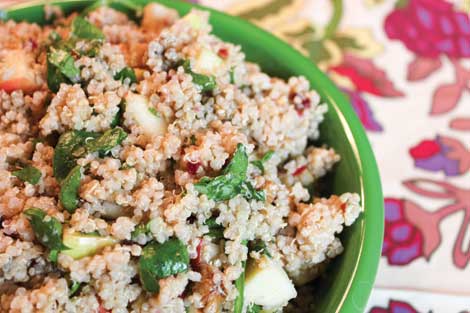As a wellness dietitian with the MultiCare Center for Healthy Living, I’m always meeting with patients and community groups to talk about food choices and nutrition. During these conversations, people often raise questions about gluten and whether they should remove it from their diet.
Below are some answers for those who are curious about gluten-free diets.
1. What is a gluten-free diet?
Gluten is a protein found in wheat, barley and rye grain products. Gluten is also found foods containing these grains, including many processed foods. Foods containing these grains must be avoided when following a gluten-free diet.
2. How do I know if I need to remove gluten from my diet?
Most commonly gluten is associated with celiac disease, an autoimmune condition in which individuals lack the ability to effectively break down gluten. Celiac disease can be diagnosed with a blood test to check gluten antibody levels. Talk with your doctor if you have concerns or a family history of celiac disease.
There is increasing concern around gluten intolerance or sensitivity. Food sensitivities do not produce an antibody reaction as seen in celiac disease; they often result in symptoms such as gastrointestinal discomfort, skin irritation or headaches. If you think you may be sensitive to gluten, consider eliminating it from your diet for two to three weeks. At the end of the elimination diet, add gluten back into your diet for one to three days. If symptoms disappear during the trial and/or reappear with the re-addition of gluten, it is likely you may have an underlying sensitivity.
3. Is there any harm in removing gluten from my diet or my child’s diet?
There is no harm in following a gluten-free diet. Gluten is not an essential protein; therefore eliminating it does no harm. Great fiber- and nutrient-rich substitutes include gluten-free oats, brown rice or quinoa. Gluten-free options are becoming increasingly accessible, however, remember to be watchful of processed foods that might provide less nutrition. Choose unprocessed, whole grains whenever possible.
4. Are there any foods that people might not realize contain gluten?
Being gluten free requires some sharp label-reading skills. Always check the ingredients list. Hidden gluten is common in soy sauce, generic seasonings, soups, sausages, malt flavoring, sauces, and more!
5. Will a gluten-free diet help me lose weight?
Eliminating gluten alone will not result in weight loss. Living a life of wellness and achieving healthy weight, is a lifestyle. Regardless of gluten-free status, best practice is to follow a healthy, balanced diet full of fresh fruits, vegetables, lean proteins, and whole grains.
Chelsey Lindahl, who wrote this article, is a wellness dietitian at the MultiCare Center for Healthy Living, which helps educate children and families in Pierce County about healthy lifestyle choices through programs such as “Ready, Set, Go! 5210†(www.multicare.org/5210). If you have questions, call Chelsey at 253-301-5095 or email chelsey.lindahl@multicare.org.
GLUTEN-FREE RECIPE: Apple-Spinach Quinoa Salad with Sweet Balsamic Vinaigrette
(6 servings)
Quinoa (pronounced keen-wah), is an ancient whole grain rich in fiber and protein (also naturally gluten free). Here it is combined with fresh spinach and sweet, crisp apples to delight the senses in this fun dish.
Salad
1 cup quinoa
1½ cups water
3 tablespoons finely chopped shallots
¼ teaspoon salt
2 teaspoons extra-virgin olive oil
1 cup medium apple, chopped
½ cup fresh baby spinach
¼ cup dried cranberries
¼ cup chopped walnuts
Dressing
1½ tablespoons extra-virgin olive oil
1½ tablespoons apple cider vinegar
½ tablespoon Dijon mustard
1 tablespoon honey
Preparation
1. Heat 2 teaspoons oil in a large saucepan over medium-high heat. Add shallots to pan; sauté 2 minutes or until tender. Add 1½ cups water and salt to pan; bring to a boil. Add quinoa; cover, reduce heat, and simmer 15 minutes or until liquid is absorbed and quinoa is tender. Remove from heat; set aside, and cool slightly.
2. To make dressing, combine 1½ tablespoons olive oil, 1½ tablespoons balsamic vinegar, ½ tablespoon Dijon mustard and 1 tablespoon honey in a large bowl; stir with a whisk to combine. Add quinoa, apple, spinach and remaining ingredients; toss gently to combine. Best served cold.
PROBLEM CAN START IN YOUR 60s

(Courtesy photo)